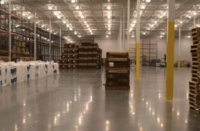“Markets for Self-cleaning Coatings and Surfaces: 2015 to 2022” is a new report released by RnRMarketResearch.com that forecasts a $3.3 billion value for self-cleaning materials (including hydrophobic, hydrophilic, electrostatic and catalytic materials) by 2020.
This research believes that self-cleaning materials will become one of the largest segments of the smart materials market in terms of revenue generation. Self-cleaning coatings for cars and windows have been around for years and yet they remain a niche market. Today’s self-cleaning materials do not have long lifetimes and more importantly are often mediocre performers when it comes to their actual ability to self-clean. The opportunity here, according to the report, is to improve self-cleaning materials so they become more autonomic and longer-lasting. If these objectives can be achieved, then the addressable market for smart materials will grow exponentially.
This self-cleaning surfaces market and coatings report discusses how self-cleaning coatings and surfaces will evolve over the next eight years. It surveys what products are available now along with the latest R&D in this space to provide a self-cleaning material technology roadmap. It also examines the product/market strategies related to self-cleaning materials that are emerging at the largest specialty chemical, glass, plastics and textile firms and at startups.
Companies discussed in this self-cleaning surfaces market and coatings report include 3M, Active, Alcoa, Apple, Balcony Systems, BASF, BlueScope Steel, Borel, Cardinal Glass, Casalgrande, Cerma, Clover, Corning, Crossville, Dell, Deutsche Telekom, DryWired, DSM Biomedical, Ecoways, Essroc, Europlasma, Faurecia, Ford, Frigidaire, GE, Gentex, Grupo Antolin, Guard Industrie, Haruna, Hypho, HzO, Italcementi, Johnson Controls, Jotun, Klingshield, Luna Innovations, McLaren, Motorola, nanoShell, Nanovations, nGimat, Nippon Steel, Nissan, NSG/Pilkington, Ocado, P2i, PPG, Reactive Surfaces, Saint-Gobain, SeePoint, SLIPS Technologies, Sto, Toto, Ultratech and Yanfeng.
Self-cleaning will find its biggest market in the construction industry, where it will generate $1.6 billion in revenues by 2020, boosted by new self-cleaning architectural components such as metal building panels as well as self-cleaning concrete. Self-cleaning building materials will find their greatest market in exterior surfaces where they have demonstrable functional benefits, such as improved light transmission and energy efficiency.
The self-cleaning materials market is currently dominated by mature hydrophobic and hydrophilic technologies which account for 94 percent of the revenues in this sector. Despite concerted efforts to improve this technology, conventional hydrophobic and hydrophilic technologies will have fallen to a 64 percent share of total self-cleaning revenues by 2020.
Future opportunities in the self-cleaning materials space will be based on new technology directions, especially novel catalysts for both photocatalytic surfaces and thermally driven self-cleaning purposes. This technology direction is expected to rack up more than $500 million in 2020. In addition, self-cleaning layers are expected to be widely used in multi-layer surfaces that also include anti-corrosion, antimicrobial and self-healing technology, leading to an additional $230 million in 2020.
This report also covers other types of self-cleaning materials technology that the researchers believe will become increasingly commercially successful. These include those based of electrostatic and catalytic approaches. In addition, it looks at novel approaches to self-cleaning that are not based on smart materials, but which may prove highly competitive to self-cleaning materials. These include ultrasound and technologies based on micro-vacuum technology.
RnRMarketResearch.com is a single source for all market research needs. Its database includes more than 500,000 market research reports from more than 100 leading global publishers and in-depth market research studies of more than 5000 micro markets. With comprehensive information about the publishers and the industries for which they publish market research reports, the company can help consumers make purchase decision by mapping information needs with its huge collection of reports.












